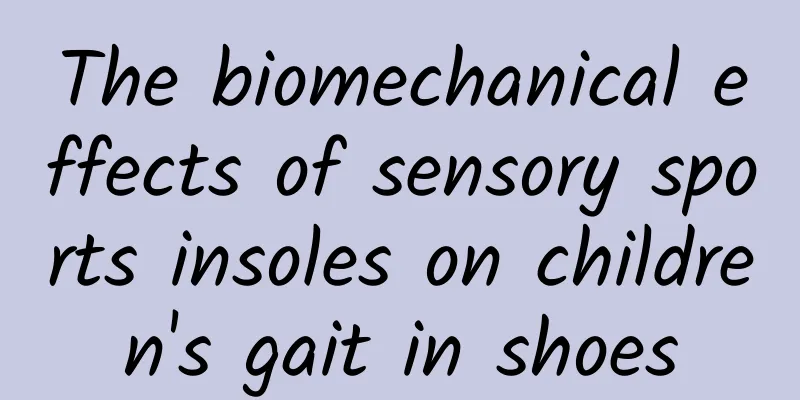The biomechanical effects of sensory sports insoles on children's gait in shoes

|
The biomechanical effects of sensory sports insoles on children's gait in shoes Gait disturbance has become the most common orthopedic problem in children. One of the most common complaints of gait disturbance in infants and young children is varus gait , which is caused by excessive proximal femoral inversion, tibial internal rotation, or metatarsal adduction. In most children without pathology, gait instability is only a minor problem that improves naturally over time, but this condition sometimes produces functional problems, such as frequent stumbling. Sensory sports insoles are a tolerable nonsurgical treatment for children. Ten patients were included in this study, including five boys and five girls, aged 3-9 years at the time of testing. Bilateral varus gait was observed in eight patients, right varus gait was observed in one patient, and left varus gait was observed in one patient. All six patients with congenital clubfoot were initially treated with serial casting and bracing , and two of them also underwent extensive soft tissue release . Four patients had idiopathic clubfoot. SMI consists of five specialized bars, including the medial and lateral heel bars, the heel bar, the toe bar, and the lateral wedge bar . The orthopedic shoe technician will individually mill the Velcro fitting element to the patient's size and fix it to the base, adjusting the fitting repeatedly to achieve the ideal gait. Computerized motion analysis testing was performed using a camera-based VICON 3D motion system with 16 passive retroreflective markers attached to specific bony landmarks of the lower extremities and pelvis. Walking speed, step length, cadence, and lower extremity joint kinematics were compared between those with and without SMI. Data analysis Mean femoral rotation angle in the transverse plane for patients using sensory motion insoles (solid line) and those not using insoles (dashed line). Positive values represent external rotation and negative values represent internal rotation. From the end of the swing phase to the beginning of the stance phase, patients using sensory motion insoles had an increased external rotation of the proximal femur relative to the pelvis. LR: loading response; TSw: end swing phase; In: internal rotation; Ext: external rotation; statistically significant. The loading phase refers to the moment when the foot touches the ground and the body weight begins to be loaded on the lower limb joints during walking. This phase includes the moment of landing, the middle and late stages of weight-bearing. During the loading reaction phase LR and the terminal swing phase TSw, SMI reduced the internal rotation of the proximal femur relative to the pelvis; The SMI reduced internal rotation of the tibia relative to the femur in the sagittal plane during mid-stance and end-stance, and ankle dorsiflexion increased during the loading reaction phase and terminal swing phase after wearing the SMI, but decreased during the terminal stance and terminal swing phases. Regarding gait parameters, SMI significantly increased walking speed (67.9 m/min vs. 64.9 m/min, P < 0.001) and step length (500 mm vs. 477 mm, P < 0.001), and patients wearing SMI had increased ankle dorsiflexion in the sagittal plane. Stabilization of the calcaneus in a neutral position between the medial and lateral calcaneus inhibits the anterior tilt of the foot joint that accompanies internal rotation of the leg, thus having a beneficial effect on the entire lower extremity. SMIs inhibit internal rotation of the leg during the loading reaction phase, which is typically observed during normal gait. The use of a lateral wedge sole reduces the step angle (i.e., the angle formed by the step direction with the foot axis during midstance stance), but the step angle is restored when a lateral wedge sole and arch support similar to the SMI are used. This study shows that the reason for the reduction in lower limb internal rotation caused by SMI is the reduction in internal rotation. discuss: 1. Although the exact biomechanical effects of this special insole on the hip and knee joints are still unclear, it can achieve therapeutic effects by changing the rotation curve of the lower limbs; 2. Improvements in walking speed depend on increases in step length, as step frequency does not differ significantly between children with and without SMI; 3. The increase in stride length may be due to the pelvis rotating inward in the forward direction during walking. END |
>>: 【Health Lecture】About chest pain: pleurisy
Recommend
What is the disease of numbness in women's hands
If the blood circulation in the arm is maintained...
Causes of itchy genitals in women
With the arrival of autumn and winter, the skin w...
I had an IUD for three years and suddenly had lower abdominal pain and bloating.
If you suddenly feel abdominal pain and bloating ...
Kidney cancer - early detection and early treatment are the key!
Author: Shi Hongzhe, deputy chief physician, Canc...
Why are the vulvar bumps not painful or itchy?
Sometimes, abnormal conditions will occur in the ...
What fruits can pregnant women eat during miscarriage?
It is such a happy thing for women to be pregnant...
What to do when a girl gets angry
Getting angry is a condition that is more common ...
If you have diarrhea after eating, you may have irritable bowel syndrome
Author: Lou Wenjia Peking Union Medical College H...
I've already gotten the flu vaccine, so why did I still get the flu?
Vaccines are one of the greatest contributions of...
How to calculate the number of days of pregnancy after transplantation
For some couples, it is difficult to get pregnant...
How long can a pregnant woman swim?
Many mothers have heard that they can swim after ...
Can I get pregnant with uterine endometriosis? I understand everything after reading it.
Because endometriosis can cause obstructions in t...
What should women drink to replenish blood and qi?
The structure of the female body is relatively co...
How long does it take for a woman to have an IUD removed?
Many women only know that the IUD can achieve the...









